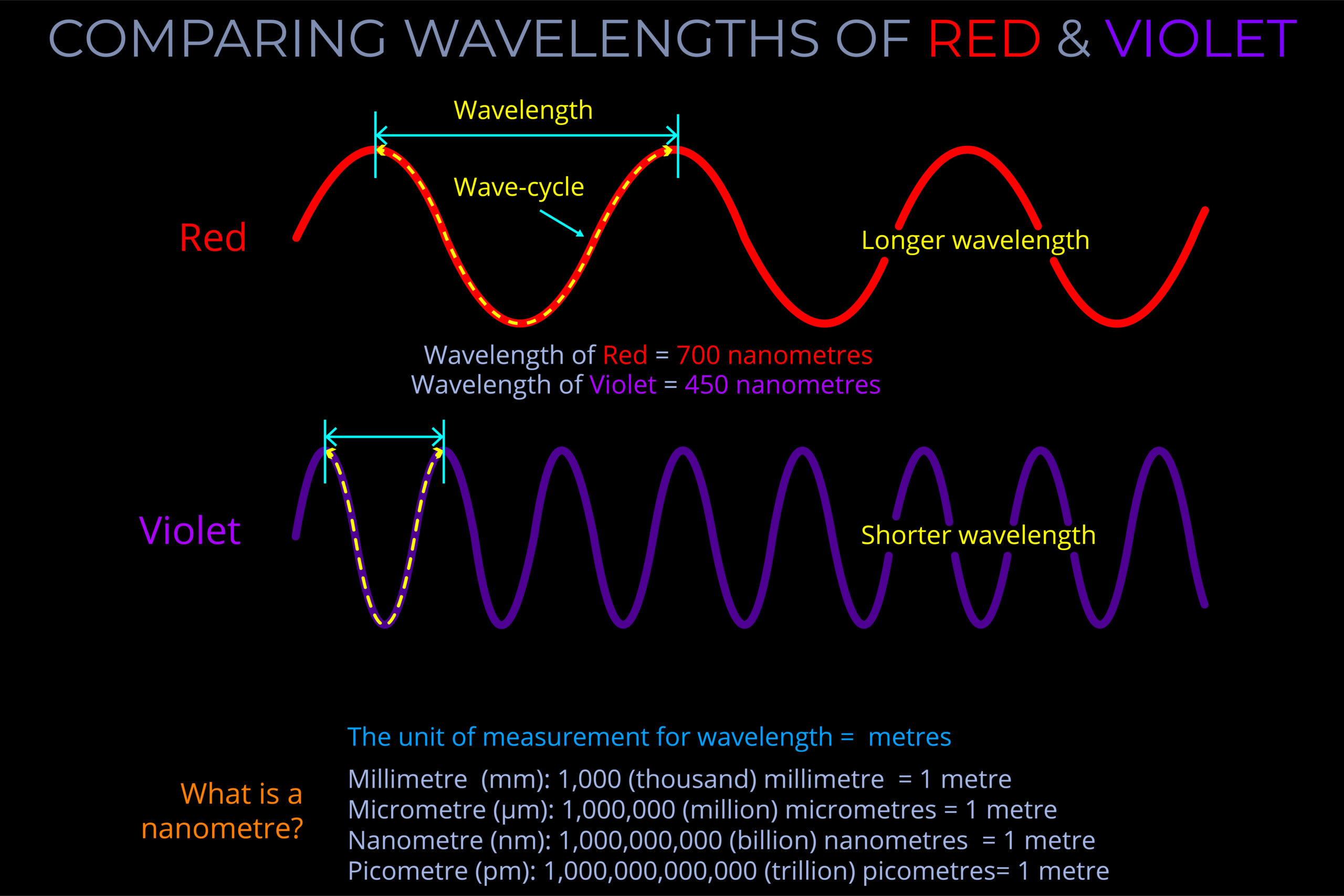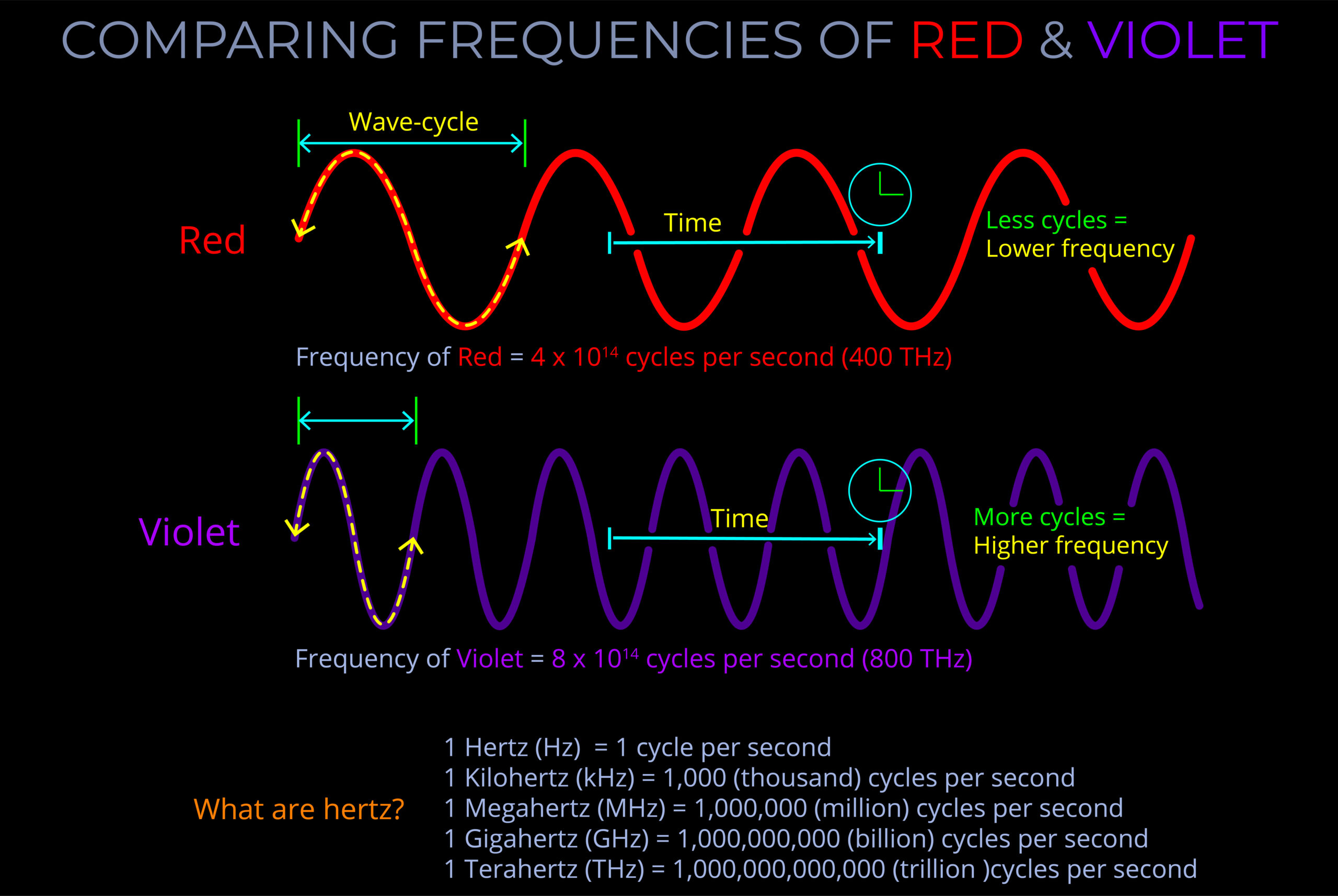The amplitude of an electromagnetic wave is directly connected with the amount of energy it carries.
In a wave diagram, amplitude is represented as the distance from the center line (or midpoint) of a wave to the top of a crest or to the bottom of a corresponding trough.
- When the amplitude of an electromagnetic wave increases, the overall distance between any peak and the next trough also increases.
- The greater the amplitude of a wave, the more energy it carries.
- The quantity of energy carried by an electromagnetic wave is proportional to the amplitude squared.
- The amplitude of the electric field of an electromagnetic wave is measured in volts per meter (V/m), while the amplitude of the magnetic field is measured in amperes per meter (A/m).
- Amplitude has an indirect correlation with the perception of the intensity of light and the brightness of colour as perceived by an observer because additional factors such as phase and interference must be taken into account.
About amplitude, brightness, colour brightness and intensity
The terms amplitude, brightness, colour brightness and intensity are easily confused. In this resource:
Amplitude
- Amplitude refers to the amount of energy carried by an electromagnetic wave. The higher the amplitude, the more energy the wave carries.
- Amplitude is a feature of electromagnetic waves.
- Other features include:
Brightness
- Brightness refers to a property of light, to how strong a light source or light reflected off an object appears to be.
- Brightness is related to how things appear from the point of view of an observer.
- When something appears bright it seems to radiate or reflect more light or colour than something else.
- Brightness may refer to a light source, an object, a surface, transparent or translucent medium.
- The brightness of light depends on the intensity or the amount of light an object emits( eg. the Sun or a lightbulb).
- The brightness of the colour of an object or surface depends on the intensity of light that falls on it and the amount it reflects.
- The brightness of the colour of a transparent or translucent medium depends on the intensity of light that falls on it and the amount it transmits.
- Because brightness is related to intensity, it is related to the amplitude of electromagnetic waves.
- Brightness is influenced by the way the human eye responds to the colours associated with different wavelengths of light. For example, yellow appears relatively brighter than reds or blues to an observer.
Colour Brightness
- Colour brightness refers to how colours appear to a human observer in terms of the lightness or darkness of colours.
So colour brightness can refer to the difference between how a colour appears to an observer in well-lit conditions and its subdued appearance when in shadow or when poorly illuminated.
- In a general sense, brightness is an attribute of visual perception and produces the impression that something is radiating or reflecting light and/or colour.
- Colour brightness increases as lighting conditions improve, whilst the vitality of colours decreases when a surface is poorly lit.
- Optical factors affecting colour brightness include:
- The angle at which incidence light approaches a medium, object or surface
- The composition of incident light in terms of wavelength and frequency
- The polarization of incident light
- Material properties affecting the colour brightness of a medium, object or surface include:
- Chemical composition
- Three-dimensional form
- Texture
- Reflectance
- Perceptual factors affecting colour brightness include:
- Adjacent colours: The presence and illumination of adjacent colours can affect both the apparent hue and brightness of a target colour.
- Attributes of visual perception.
Intensity
-
- Intensity refers to the amount of light produced by a light source or the amount of light that falls on a particular area of the object.
- So intensity measures the energy carried by a light wave or stream of photons:
- When light is modelled as a wave, intensity is directly related to amplitude.
- When light is modelled as a particle, intensity is directly related to the number of photons present at any given point in time.
- Light intensity falls exponentially as the distance from a point light source increases.
- Light intensity at any given distance from a light source is directly related to its power per unit area (when the area is measured on a plane perpendicular to the direction of propagation of light).
- The power of a light source describes the rate at which light energy is emitted and is measured in watts.
- The intensity of light is measured in watts per square meter (W/m2).
- Cameras use a light meter to measure the light intensity within an environment or reflected off a surface.
- The amplitude of an electromagnetic wave is directly connected with the amount of energy it carries.
- In a wave diagram, amplitude is represented as the distance from the center line (or midpoint) of a wave to the top of a crest or to the bottom of a corresponding trough.
- When the amplitude of an electromagnetic wave increases, the overall distance between any peak and the next trough also increases.
- The quantity of energy carried by an electromagnetic wave is proportional to the amplitude squared.
- Amplitude has an indirect correlation with the perception of the intensity of light and the brightness of colour as perceived by an observer because additional factors such as phase and interference must be taken into account.


